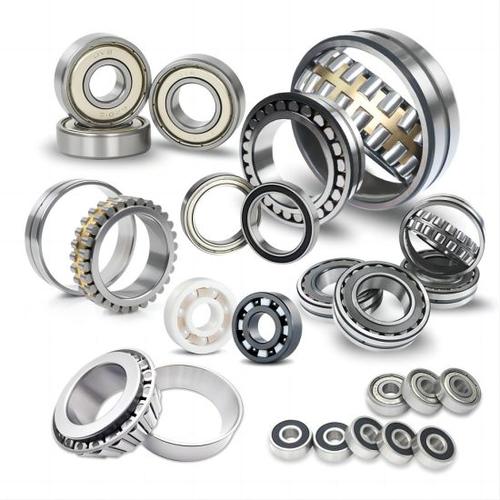Industrial Ball Bearings: Types, Applications, and Maintenance Tips for Optimal Performance
Industrial ball bearings are critical components in machinery, enabling smooth rotational motion by reducing friction between moving parts. They are widely used in automotive, aerospace, manufacturing, and energy industries due to their durability and efficiency. This article explores key aspects of industrial ball bearings to help you optimize their performance.
1、types of industrial ball bearings2、how to maintain industrial ball bearings
3、industrial ball bearing applications
4、signs of bearing failure in industrial machinery
5、how to choose the right ball bearing for industrial equipment
1、types of industrial ball bearings

Industrial ball bearings come in various designs tailored to specific operational needs. Deep groove ball bearings handle radial and axial loads, making them ideal for electric motors. Angular contact bearings manage combined loads in high-speed applications like turbines. Thrust ball bearings specialize in axial load support, commonly used in gearboxes. Self-aligning ball bearings compensate for shaft misalignment in heavy machinery. Ceramic hybrid bearings offer corrosion resistance for harsh environments. Each type has unique advantages, and selecting the right one depends on load capacity, speed, temperature, and environmental conditions. Understanding these variations ensures optimal machinery performance and longevity.
2、how to maintain industrial ball bearings
Proper maintenance extends the lifespan of industrial ball bearings. Regular lubrication reduces friction and wear; use grease or oil compatible with operating temperatures. Monitor vibration levels to detect early signs of misalignment or imbalance. Implement contamination control by sealing bearings from dust and moisture. Schedule routine inspections for cracks, pitting, or discoloration. Always follow manufacturer guidelines for load limits and installation torque. Predictive maintenance tools like thermal cameras and vibration analyzers help preempt failures. Training staff on proper handling and storage practices further minimizes premature wear, ensuring reliable operation.
3、industrial ball bearing applications
Industrial ball bearings are integral to countless applications. In automotive systems, they support wheel hubs and transmissions. Aerospace relies on precision bearings for jet engines and landing gear. Manufacturing equipment like CNC machines uses high-speed bearings for accuracy. Wind turbines employ large-scale bearings to handle variable loads. Robotics depend on miniature bearings for precise joint movements. Even medical devices utilize sterile-compliant bearings in imaging systems. Each application demands specific bearing properties, such as load capacity, speed tolerance, or corrosion resistance, highlighting their versatility across industries.
4、signs of bearing failure in industrial machinery
Detecting bearing failure early prevents costly downtime. Unusual noises like grinding or squealing indicate wear or lubrication issues. Excessive heat suggests friction from misalignment or overloading. Vibration spikes often point to imbalance or component damage. Visible wear marks, rust, or discoloration signal contamination or material fatigue. Reduced operational efficiency, such as increased energy consumption, may also reflect bearing degradation. Implement condition monitoring systems to track these indicators. Addressing symptoms promptly through relubrication, alignment correction, or replacement mitigates risks and maintains productivity.
5、how to choose the right ball bearing for industrial equipment
Selecting the appropriate ball bearing involves evaluating multiple factors. Calculate load requirements (radial, axial, or combined) and operational speed. Consider environmental conditions like temperature, humidity, and exposure to chemicals. Material choice—stainless steel, ceramic, or polymer—affects durability and corrosion resistance. Precision ratings (ABEC classes) determine suitability for high-accuracy applications. Lubrication type must align with operating temperatures and contamination risks. Consult manufacturer catalogs for load-life calculations and compatibility charts. Partnering with reputable suppliers ensures access to technical support and certified products, optimizing equipment performance.
Understanding industrial ball bearings is crucial for maximizing machinery efficiency. From selecting the right type to recognizing failure signs, each aspect covered here contributes to operational reliability. Whether you're troubleshooting vibration issues or exploring ceramic hybrid options, these insights equip you to make informed decisions. Dive deeper into maintenance strategies, application-specific solutions, and advanced selection criteria to keep your systems running smoothly and cost-effectively.
In conclusion, industrial ball bearings play a pivotal role in modern machinery. By mastering their types, maintenance practices, and selection criteria, businesses can enhance equipment longevity, reduce downtime, and boost productivity. Stay proactive with regular inspections and leverage advanced technologies to stay ahead in industrial operations.




 13869596835
13869596835